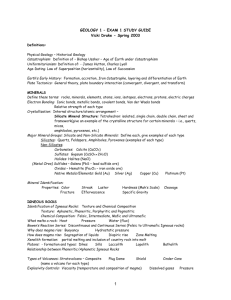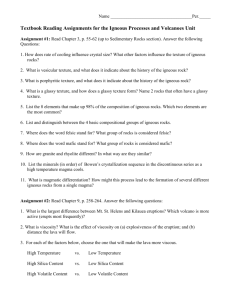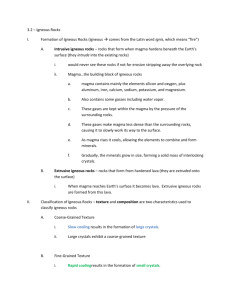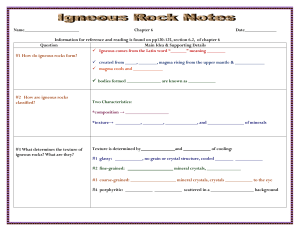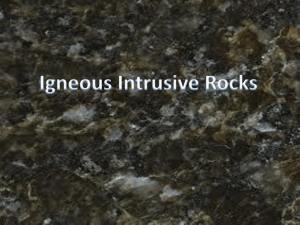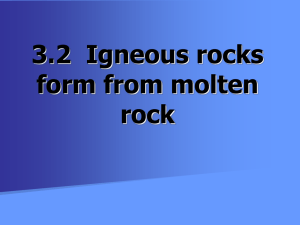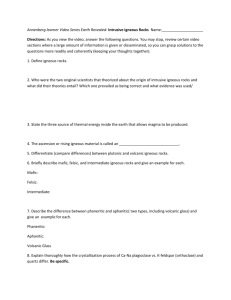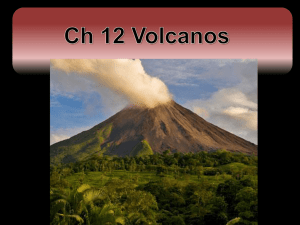Volcanoes Magma and Igneous Rocks Earthquakes notes sheet
advertisement
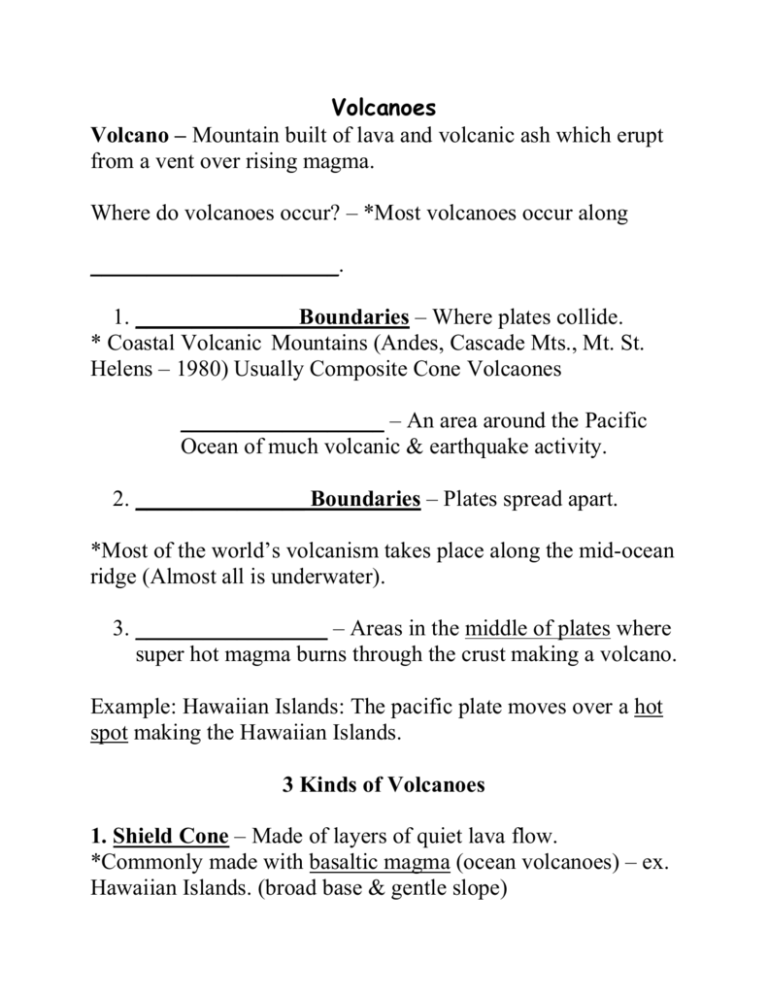
Volcanoes Volcano – Mountain built of lava and volcanic ash which erupt from a vent over rising magma. Where do volcanoes occur? – *Most volcanoes occur along ______________________. 1. ______________ Boundaries – Where plates collide. * Coastal Volcanic Mountains (Andes, Cascade Mts., Mt. St. Helens – 1980) Usually Composite Cone Volcaones __________________ – An area around the Pacific Ocean of much volcanic & earthquake activity. 2. _______________ Boundaries – Plates spread apart. *Most of the world’s volcanism takes place along the mid-ocean ridge (Almost all is underwater). 3. _________________ – Areas in the middle of plates where super hot magma burns through the crust making a volcano. Example: Hawaiian Islands: The pacific plate moves over a hot spot making the Hawaiian Islands. 3 Kinds of Volcanoes 1. Shield Cone – Made of layers of quiet lava flow. *Commonly made with basaltic magma (ocean volcanoes) – ex. Hawaiian Islands. (broad base & gentle slope) 2. Cinder Cone – Made of cinder and ash *Commonly made with granitic magma (continental volcanoes) – ex. Paricutan in Mexico.(steep sides) 3. C omposite Cone – Made of both layers of lava and cinder and ash. *Commonly found on Continents , Largest Volcanoes *Ex. Mt. St. Helens, Mt. Fuji, Mt, Vesuvius Factors that affect eruptions: __________________________, _________________________, ________________________ Low Viscosity High Viscosity Low Gasses High Gasses Pyroclastics/Tephra: __________________________________________________ Magma and Igneous Rocks How Magma Forms • • • Occurs when temperatures are high enough to melt the rocks involved (8001200 degrees C) Pressure- because pressure increases with depth, it takes rocks longer to melt—they need higher temperatures to melt. Water- if a rock has water in it, it will melt at lower temperatures Types of Magma • ______________________high in silica-based minerals (quartz, feldspar, mica) – Explosive eruptions (Mt. St. Helens) • ______________________high in iron-based minerals (mainly dark— pyroxene, olivine, amphibole) – Quiet eruptions (Hawaii) • ______________________mixture of silica and Fe minerals Igneous Rocks Classifying Igneous Rocks _____________: Determined by the cooling rate. _____________: what they are made out of: Basaltic(Mafic) minerals vs. Granitic(Felsic) minerals. * ______________ igneous rocks—form from lava (on surface)—very small minerals (aphanitic, vesicular, glassy) * ______________ igneous rocks—form from magma (inside Earth)—large, visible minerals (phaneritic). Igneous Rock Textures * If a rock has a: * __________________ Texture, it formed extremely rapidly, allowing no minerals to grow. __________________ Texture, it cooled extremely rapidly. As it was cooling, gas escaping from the rock formed bubbles __________________ Texture, it cooled quickly, only allowing small mineral growth __________________Texture, it cooled slowly, allowing for large crystal growth __________________ Texture, had two-stage cooling—first slow underground, then fast on the surface _________________ Texture, it was created by the explosive release of gases in a volcano welding lava fragments together. Earthquakes: The shaking or trembling caused by the sudden release of energy Usually associated with faulting or breaking of rocks Described by the Elastic Rebound Theory Elastic Rebound Theory: ____________________________________________ _______________ – travel along the surface, cause the most damage (Your teacher may divide these further into Love and Raleigh Waves) (Slower than Body) Body – travel through the Earth • P waves- pushes and pulls the rock (twice as fast as S wave) • S wave – slower, displaces rock at right angles, don’t travel through liquids Moho: The dept at which the P-wave velocity exceeds 8.1 Km/S is referred to as the moho (after the seismologist Mohorovicic). The moho is both a seismic and a compositional boundary, marking the transition between crust and mantle materials. Richter Scale: Mercalli Scale:
